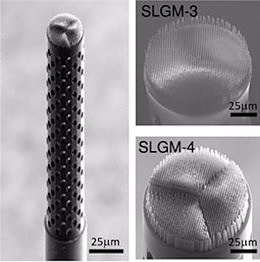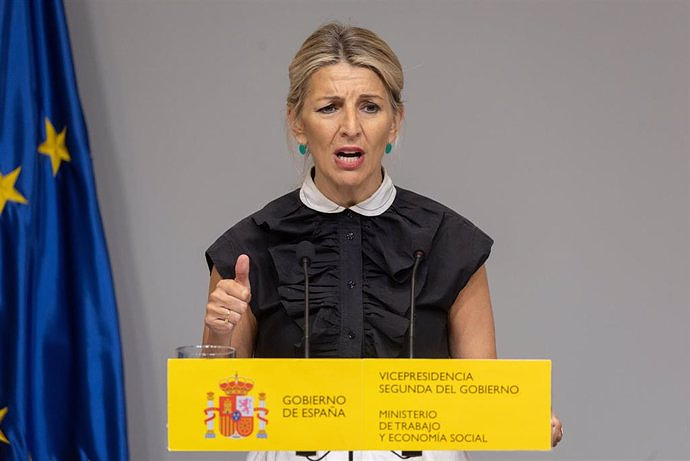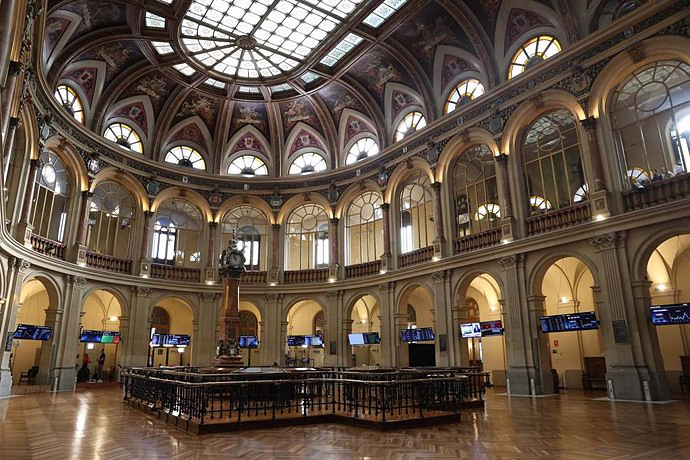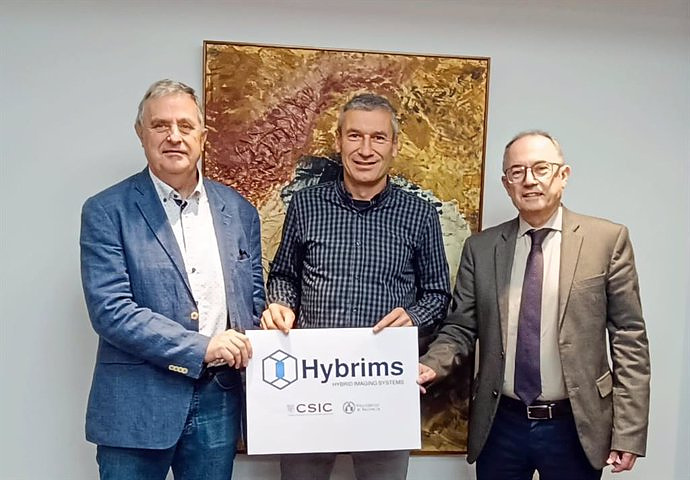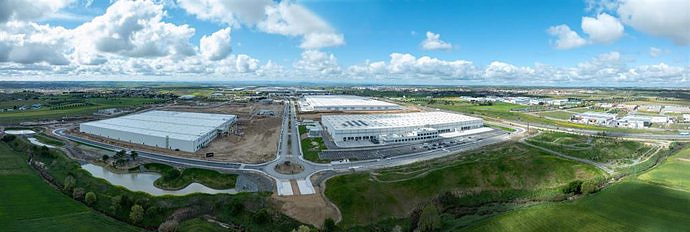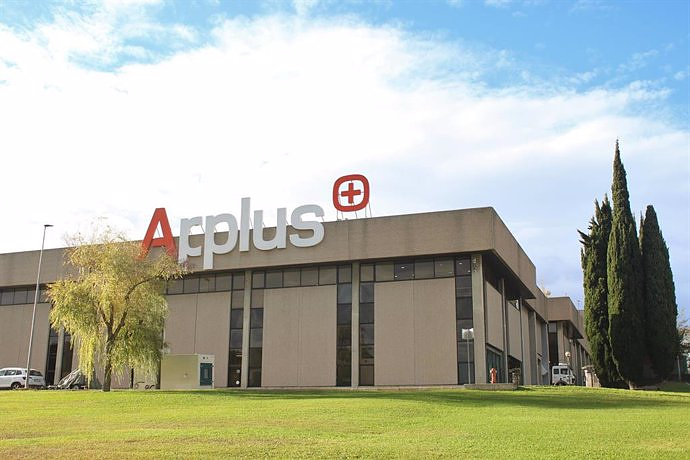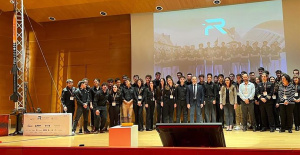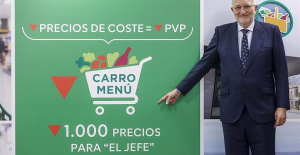ALICANTE, 9 Ene. (EUROPE PRESS) -
The University of Alicante (UA) has collaborated in a study that demonstrates how 3D printing of nanostructures on the tip of an optical fiber allows the generation of structured light beams with independent control of the polarization and phase of the light beam at each point. of the wave front. The work has been published in the journal 'Nature Communications'.
The UA has collaborated in this research through the work of the professor of Applied Physics and member of the Holography and Optical Processing Group (GHPO), Andrés Márquez. "Our work provides a paradigm for advancing fiber optic science and technology toward fiber-integrated light shaping, which may find important applications in fiber communications, fiber lasers and sensors, endoscopic imaging, fiber lithography and lab-on-fiber technology", indicate the signatories of the study.
Optical fibers are present on a daily basis in today's society as fundamental elements that have allowed, in recent decades, the explosion in the capacity to transmit information associated with the rise of the Internet and mobile communications. Many of the home internet supply lines, for example, pass through these fibers whose core diameter is ten times smaller than a hair.
With this, the information transmission capacity has increased at an "exponential rate" thanks to advances in technologies such as laser sources or receivers used in the links and also in all digital processing electronics and new data coding methods. the signal to increase the efficiency of the physical transport channel, which is the fiber.
According to the UA researcher, "one of the fundamental advances began in the 90s, with the introduction of wavelength multiplexing, which allows the same fiber channel to be used to simultaneously transport several dozen or even hundreds of optical signals with wavelengths very close to each other, but which nevertheless propagate independently.
According to the UA, light is "an electromagnetic wave that allows information to be transported through the modification of its properties. In the most advanced applications, these properties can be modified at a local level, so that the wave front is not homogeneous , but rather it has a structure, so these light beams can have very different structures."
These structured beams allow, for example, that in optical communications "several channels of information can be transmitted simultaneously where the difference between them is the structure of their wavefront, which allows increasing the information transmission capacity that today's society needs. ".
To be able to "write" this information at a local level in a beam of light, it is necessary to interact at a nanometric level with the wave front, which is possible through metasurfaces, which have emerged in the last decade and are formed by structural units of submicron sizes, the so-called metaatoms, "which, just as an atom would do, interact with the incident light by absorbing it, delaying it or changing its plane of polarization," Márquez detailed.
As the article has shown, "the revolution in 3D printing techniques using special printers, which combine ultrafast laser writing beams (femtosecond lasers) and polymers that polymerize in multiphoton reactions, has been essential to be able to meet the objectives pursued in the present investigation."
The work is the result of collaboration between various groups and research centers from Germany, Australia, England and Brazil, among which is also the Holography and Optical Processing group (GHPO) of the University Institute of Physics Applied to Sciences and Technologies (IUFACyT) of the University of Alicante, to which Professor Andrés Márquez belongs.
Various stays carried out by the UA professor at the Nanoinstitute of the University of Munich "have made it possible to gather the necessary specialties to be able to carry out such a complex project both at the level of theoretical foundations, design and simulation, manufacturing and evaluation at an experimental level of the manufactured devices", the researcher himself concluded.

 Exploring Cardano: Inner Workings and Advantages of this Cryptocurrency
Exploring Cardano: Inner Workings and Advantages of this Cryptocurrency Seville.- Economy.- Innova.- STSA inaugurates its new painting and sealing hangar in San Pablo, for 18 million
Seville.- Economy.- Innova.- STSA inaugurates its new painting and sealing hangar in San Pablo, for 18 million Innova.- More than 300 volunteers join the Andalucía Compromiso Digital network in one month to facilitate access to ICT
Innova.- More than 300 volunteers join the Andalucía Compromiso Digital network in one month to facilitate access to ICT Innova.-AMP.- Ayesa acquires 51% of Sadiel, which will create new technological engineering products and expand markets
Innova.-AMP.- Ayesa acquires 51% of Sadiel, which will create new technological engineering products and expand markets Cos bids farewell to Congress warning that the lack of political consensus "affects economic prospects"
Cos bids farewell to Congress warning that the lack of political consensus "affects economic prospects" Two workers died and one injured when two floors collapsed in a building under construction in Fuencarral
Two workers died and one injured when two floors collapsed in a building under construction in Fuencarral The Government will wait until after the European elections to propose measures on democratic regeneration
The Government will wait until after the European elections to propose measures on democratic regeneration The PP sees Puente as Sánchez's "servant" and the PSOE as a "sect", and the minister accuses them of putting on a show
The PP sees Puente as Sánchez's "servant" and the PSOE as a "sect", and the minister accuses them of putting on a show How Blockchain in being used to shape the future
How Blockchain in being used to shape the future Not just BTC and ETH: Here Are Some More Interesting Coins Worth Focusing on
Not just BTC and ETH: Here Are Some More Interesting Coins Worth Focusing on They develop devices for the precise diagnosis of cancer patients
They develop devices for the precise diagnosis of cancer patients UMH researchers are working on a high-quality apricot crop that requires less irrigation water
UMH researchers are working on a high-quality apricot crop that requires less irrigation water The UPV develops an application to improve the quality of life of patients with glioblastoma
The UPV develops an application to improve the quality of life of patients with glioblastoma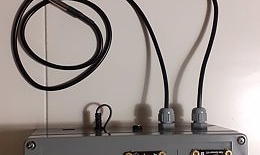 A sensor system obtains the fingerprint of essential oils and detects if they have been adulterated
A sensor system obtains the fingerprint of essential oils and detects if they have been adulterated A million people demonstrate in France against Macron's pension reform
A million people demonstrate in France against Macron's pension reform Russia launches several missiles against "critical infrastructure" in the city of Zaporizhia
Russia launches several missiles against "critical infrastructure" in the city of Zaporizhia A "procession" remembers the dead of the Calabria shipwreck as bodies continue to wash up on the shore
A "procession" remembers the dead of the Calabria shipwreck as bodies continue to wash up on the shore Prison sentences handed down for three prominent Hong Kong pro-democracy activists
Prison sentences handed down for three prominent Hong Kong pro-democracy activists ETH continues to leave trading platforms, Ethereum balance on exchanges lowest in 3 years
ETH continues to leave trading platforms, Ethereum balance on exchanges lowest in 3 years Investors invest $450 million in Consensys, Ethereum incubator now valued at $7 billion
Investors invest $450 million in Consensys, Ethereum incubator now valued at $7 billion Alchemy Integrates Ethereum L2 Product Starknet to Enhance Web3 Scalability at a Price 100x Lower Than L1 Fees
Alchemy Integrates Ethereum L2 Product Starknet to Enhance Web3 Scalability at a Price 100x Lower Than L1 Fees Mining Report: Bitcoin's Electricity Consumption Declines by 25% in Q1 2022
Mining Report: Bitcoin's Electricity Consumption Declines by 25% in Q1 2022 Oil-to-Bitcoin Mining Firm Crusoe Energy Systems Raised $505 Million
Oil-to-Bitcoin Mining Firm Crusoe Energy Systems Raised $505 Million Microbt reveals the latest Bitcoin mining rigs -- Machines produce up to 126 TH/s with custom 5nm chip design
Microbt reveals the latest Bitcoin mining rigs -- Machines produce up to 126 TH/s with custom 5nm chip design Bitcoin's Mining Difficulty Hits a Lifetime High, With More Than 90% of BTC Supply Issued
Bitcoin's Mining Difficulty Hits a Lifetime High, With More Than 90% of BTC Supply Issued The Biggest Movers are Near, EOS, and RUNE during Friday's Selloff
The Biggest Movers are Near, EOS, and RUNE during Friday's Selloff Global Markets Spooked by a Hawkish Fed and Covid, Stocks and Crypto Gain After Musk Buys Twitter
Global Markets Spooked by a Hawkish Fed and Covid, Stocks and Crypto Gain After Musk Buys Twitter Bitso to offset carbon emissions from the Trading Platform's ERC20, ETH, and BTC Transactions
Bitso to offset carbon emissions from the Trading Platform's ERC20, ETH, and BTC Transactions Draftkings Announces 2022 College Hoops NFT Selection for March Madness
Draftkings Announces 2022 College Hoops NFT Selection for March Madness